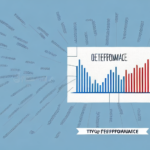Managing Demand Volatility in a Changing Market
In today's fast-paced and ever-changing market, businesses face the constant challenge of managing demand volatility. Fluctuating consumer demands, changing market trends, and economic shifts can all contribute to demand uncertainty. These challenges can be particularly daunting for smaller businesses or those operating in highly competitive markets. However, with the right strategies in place, demand volatility can be managed effectively to maintain business growth and profitability. In this article, we explore best practices for managing demand volatility and discuss the latest trends and technologies that can help businesses stay ahead of the curve.
Understanding Market Changes and Their Impact on Demand
One of the key factors influencing demand volatility is the constantly changing market landscape. New entrants, shifts in consumer preferences, and technological advances can disrupt established market players and create new demand patterns. To manage these changes effectively, businesses need to invest in data analysis tools and techniques that allow them to understand consumer behavior and market trends with a high degree of accuracy.
Staying updated with industry news and developments is crucial. This involves attending industry conferences, networking with professionals, and regularly monitoring relevant publications and news sources. By staying informed and proactive, businesses can better position themselves to navigate the challenges and opportunities presented by a constantly evolving market.
Impact of Emerging Technologies
Technological advancements, such as artificial intelligence and machine learning, are reshaping how businesses predict and respond to market changes. According to a McKinsey report, AI can enhance demand forecasting accuracy by up to 20%, enabling more responsive supply chain strategies.
Leveraging Data Analysis for Demand Forecasting and Supply Chain Optimization
Effective demand management requires accurate forecasting of consumer behavior. Data analysis helps businesses identify trends and patterns, allowing for more informed decisions about pricing, inventory management, and marketing strategies. Techniques such as time series analysis, regression analysis, and machine learning algorithms can predict demand fluctuations with greater accuracy.
Additionally, data analysis optimizes supply chain management by analyzing supplier lead times, transportation costs, and inventory levels. This ensures that businesses have the right products in stock at the right time, reducing the risk of stockouts and lost sales.
Identifying New Market Opportunities
By analyzing data on consumer demographics, preferences, and purchasing behavior, businesses can identify new target markets and develop tailored products and marketing strategies. This expansion can increase the customer base and revenue streams.
For instance, a study by Harvard Business Review highlights the importance of building robust data analytics capabilities to uncover hidden market opportunities.
Implementing Effective Forecasting and Pricing Strategies
Effective forecast management begins with identifying the key drivers of demand volatility, such as seasonal changes, shifts in consumer demographics, and the introduction of new products or services. Monitoring these drivers closely allows businesses to develop accurate forecasts and adjust their strategies accordingly. Forecasts should be iterative and regularly updated to reflect market changes.
Advanced analytics and machine learning algorithms enhance forecasting accuracy by identifying complex patterns in data. Scenario planning helps businesses prepare for a range of possible outcomes, developing contingency plans to mitigate unexpected events.
Dynamic Pricing Models
Implementing dynamic pricing algorithms enables businesses to adjust prices in real-time based on demand and supply data. This optimization can maximize revenue and minimize the risk of overstocking or understocking.
A Forbes article discusses how dynamic pricing strategies have been successfully adopted across various industries to enhance profitability.
Optimizing Supply Chain and Utilizing Technological Solutions
Supply chain optimization is crucial for managing demand volatility. Streamlining the supply chain and reducing lead times allow businesses to respond quickly to market changes. Strategies include adopting agile manufacturing techniques, implementing vendor-managed inventory systems, and outsourcing logistics operations to third-party providers.
Technological solutions such as cloud-based software, blockchain, and the Internet of Things (IoT) offer new opportunities to optimize supply chains and mitigate risks. These technologies provide greater visibility and control over supply chain operations, enabling more responsive and flexible management.
Integration of IoT in Supply Chain
The integration of IoT devices in supply chain management allows for real-time tracking of goods and inventory levels. This enhanced visibility helps businesses anticipate and respond to disruptions swiftly.
The Gartner Glossary provides extensive insights into how IoT is transforming supply chain operations.
Building Resilience Through Scenario Planning and Risk Management
Despite advances in technology and forecasting techniques, demand volatility remains a constant challenge. To manage this risk effectively, businesses should incorporate scenario planning and risk management into their overall strategy. This includes developing contingency plans for potential market disruptions, diversifying product portfolios, and establishing strategic partnerships with key suppliers or distributors.
Scenario planning involves identifying potential risks and opportunities that may arise in the future. By considering a range of possible scenarios, businesses can better prepare for unexpected events and capitalize on emerging trends.
Establishing Clear Communication Protocols
Effective risk management requires establishing clear communication channels and protocols for responding to crises. This includes developing emergency response plans, training employees on crisis management procedures, and partnering with local authorities or emergency services. A proactive approach to risk management minimizes the impact of disruptions and ensures continuity of operations.
According to ISO 31000, a standardized approach to risk management enhances an organization's ability to anticipate and mitigate risks effectively.
Analyzing Customer Behavior and Addressing Demand Volatility
Customer behavior is a significant driver of demand volatility. Understanding and anticipating customer preferences help businesses shape market trends. Monitoring customer feedback and analyzing data from interactions provide valuable insights for adjusting strategies.
Targeted marketing campaigns and personalized customer experiences can stabilize demand and reduce the risks of sudden market shifts.
Personalized Marketing Strategies
Investing in customer education and engagement through personalized marketing strategies fosters long-term loyalty and informed purchasing decisions. This approach not only enhances customer satisfaction but also contributes to more predictable demand patterns.
A study by Nielsen emphasizes the effectiveness of personalization in driving customer engagement and loyalty.
Future Outlook and Best Practices for Managing Demand Volatility
As markets continue to evolve, demand volatility will persist as a challenge for businesses of all sizes. Adopting the right strategies and investing in the appropriate technologies are essential for preparing for future uncertainties. Emerging trends may include greater use of predictive analytics, automation, robotics, and innovative business models tailored to volatile markets.
Businesses that effectively manage demand volatility will be better positioned for long-term success. Best practices include:
- Investing in data analysis tools and techniques to understand customer behavior and market trends.
- Developing accurate forecasting techniques to predict demand fluctuations.
- Implementing flexible pricing and inventory management strategies to respond swiftly to market changes.
- Optimizing the supply chain to reduce lead times and enhance responsiveness.
- Utilizing advanced technologies like cloud-based software, blockchain, and IoT to streamline operations and mitigate risks.
- Incorporating scenario planning and comprehensive risk management into business strategies.
By embracing these best practices, businesses can navigate the complexities of a changing market and sustain growth amidst demand volatility.
Embracing Automation and Robotics
Automation and robotics are set to play a pivotal role in enhancing operational efficiency and responsiveness. According to a PwC report, the integration of robotics in supply chain operations can lead to a 30% increase in efficiency, enabling businesses to better handle demand fluctuations.
Conclusion: Preparing for Uncertainty
Managing demand volatility in a changing market requires a multifaceted approach that combines data-driven insights, flexible strategies, and advanced technological solutions. By understanding market dynamics, leveraging data analysis, optimizing supply chains, and building resilience through effective risk management, businesses can navigate the uncertainties of today's marketplace. Looking ahead, the continued evolution of technologies and business practices will further equip businesses to manage demand volatility and achieve sustained success.






















